I have spent Monday, June 8, attending the Visiolink one-day conference (#vid15) about the business and craft of bringing printed newspapers to digital platforms via those e-papers that we can flip through on our tablet, pc or smartphone. In fact, more readers are reading e-paper editions of their favorite newspaper on a mobile platform.
I was honored to give the keynote presentation at this conference, highlights of which I will present below.
There is more than just flipping the pages of a newspaper on a mobile platform, however. Today, e-paper editions are enhancing the reading experience with special elements incorporated to bring more of the digital mode to the traditional reading of a newspaper.
I will share what I have learned here.
e-papers: orphans of the media landscape?
As I said at the beginning of my keynote at this conference devoted entirely to e-papers: I have never been directly involved in the creation of an e-paper edition, nor was the e-paper discussed beyond a statement that it would be there in the majority of all projects I have been involved with. So, in that sense, and as several speakers at this conference mentioned, e-papers are perhaps orphans in the media landscape.
It should not be, since they may be the way that those historic print editions will perpetuate themselves in the digital media landscape. This, of course, remains to be seen, but it was a point I made at the conference.
Already, several Scandinavian dailies that do not print a newspaper on specific holidays during the year, are substituting it for an e-paper edition. This is a model that I can see happening when, as I foresee, many dailies will not print daily, but print a robust weekend edition as their only print product.
e-paper facts
Time spent reading e-papers: For the majority of the participants in the conference, all with active e-paper editions, the average time is about 10 minutes, 12 maximum.
Preferred mode: The so called identical 1:1 style, where a replica of the printed newspaper appears as a pdf to be consumed on a digital platform, seems to be what users of e-paper editions prefer. However, as some of the experts at the conference told me, this is a matter of time and better presentation of the most digital aspects of how an e-paper could be.
Why e-papers matter: The consensus among those publishers and editors who have successful e-papers is that e- papers are one sure way to bring your readers safely into the digital future.
The technical side: Kenneth Boll, CEO of Visiolink, mentioned that in 2009 his company only had to deal with pc's to transfer a newspaper to turn it into an e-paper. “
“Then came the iPad. Now there are 200 Android devices to be concerned with. But also 18,796 types of hardware to deal with. The new technology affords new features and possibilities for how e papers are displayed. For us, the idea is to integrate advertising, editorial and business intelligence….and being responsive to change is important to us.”
When most e-papers are read: Late evening is a popular time, according to all represented at the Insights Day conference. For many titles, publishing tomorrow's newspaper's e-paper edition the night before has become a very successful strategy.
Take a look at these e-papers
Here are some e-papers that seem to be doing it right. Take a look:
Goteborgs Posten, Sweden
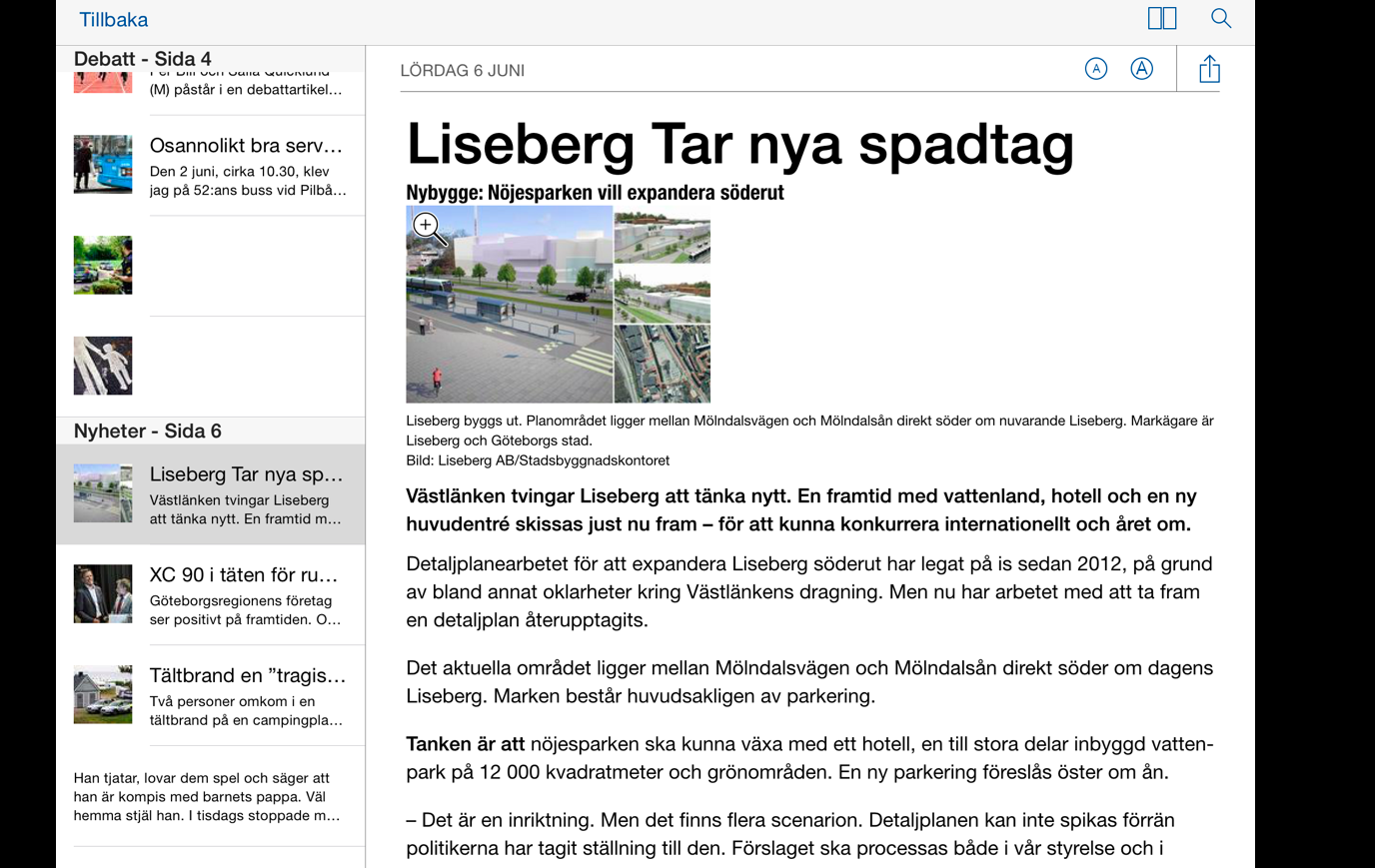

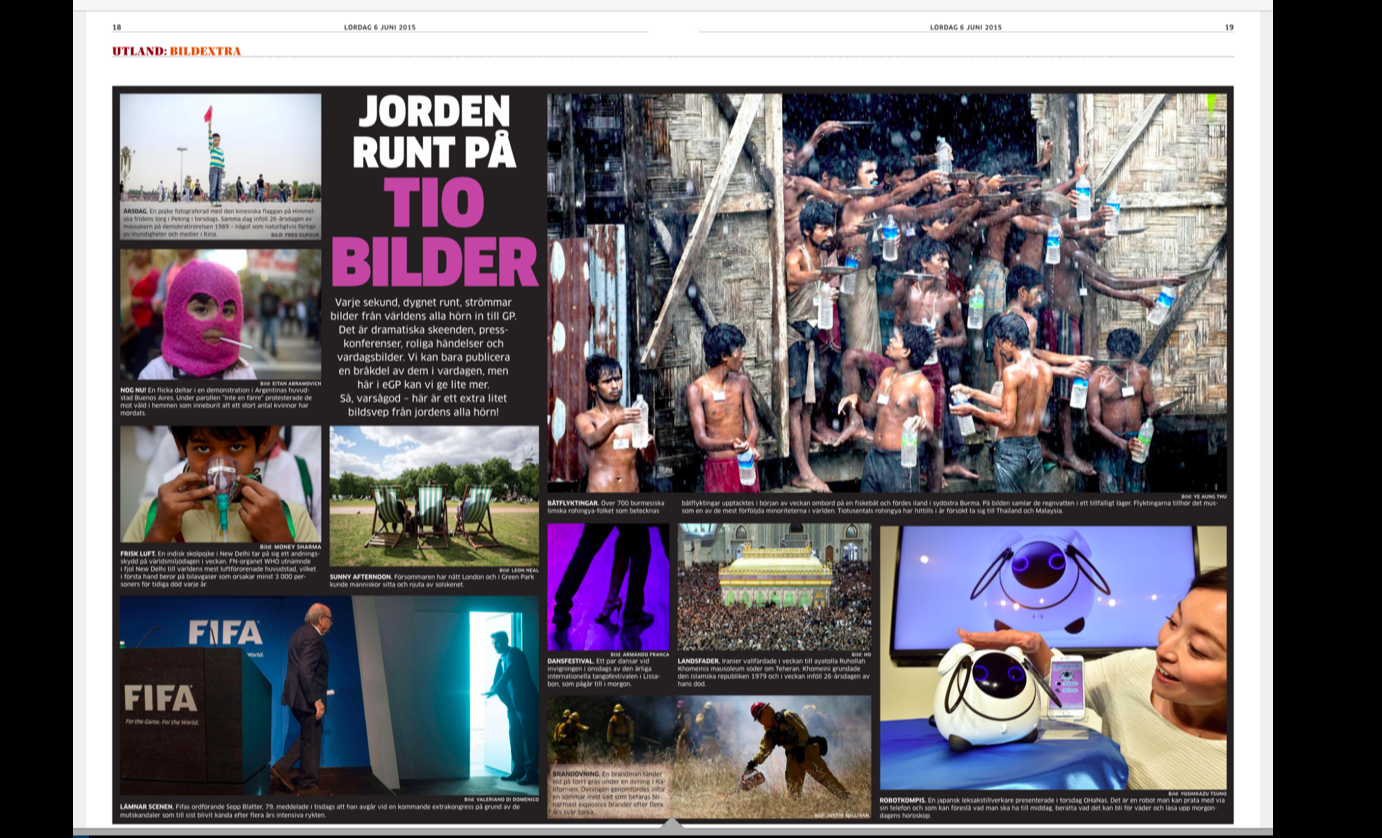
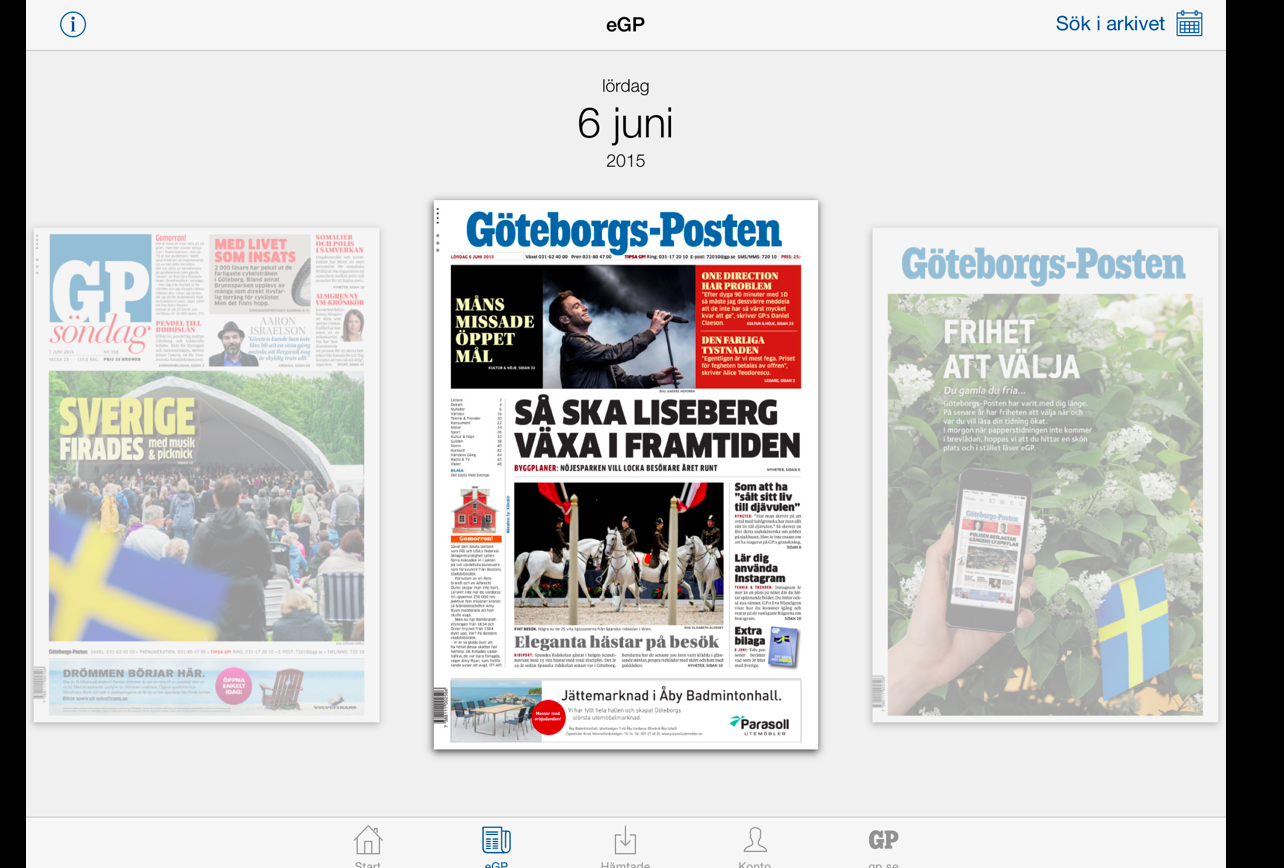
Børsen, Denmark

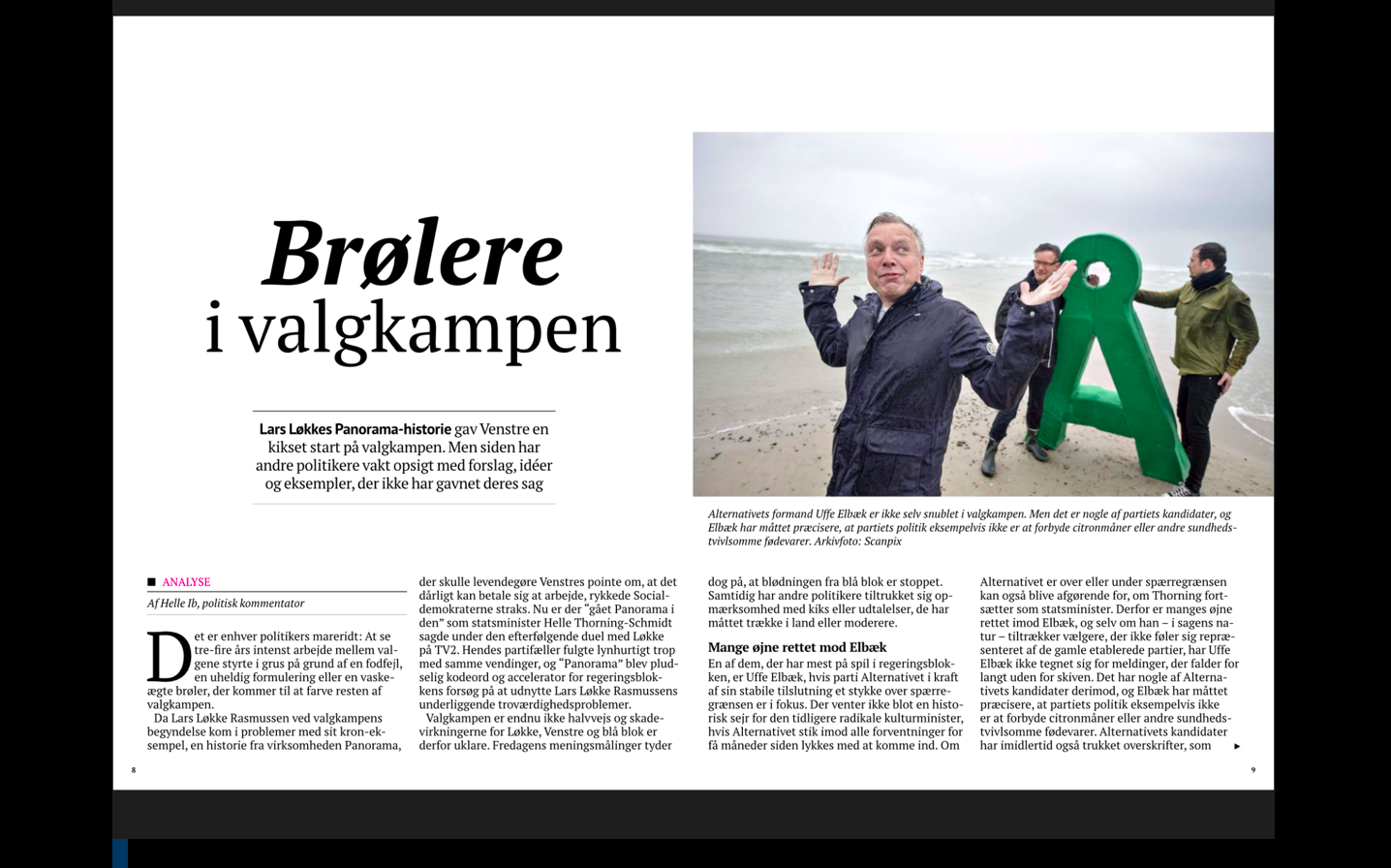

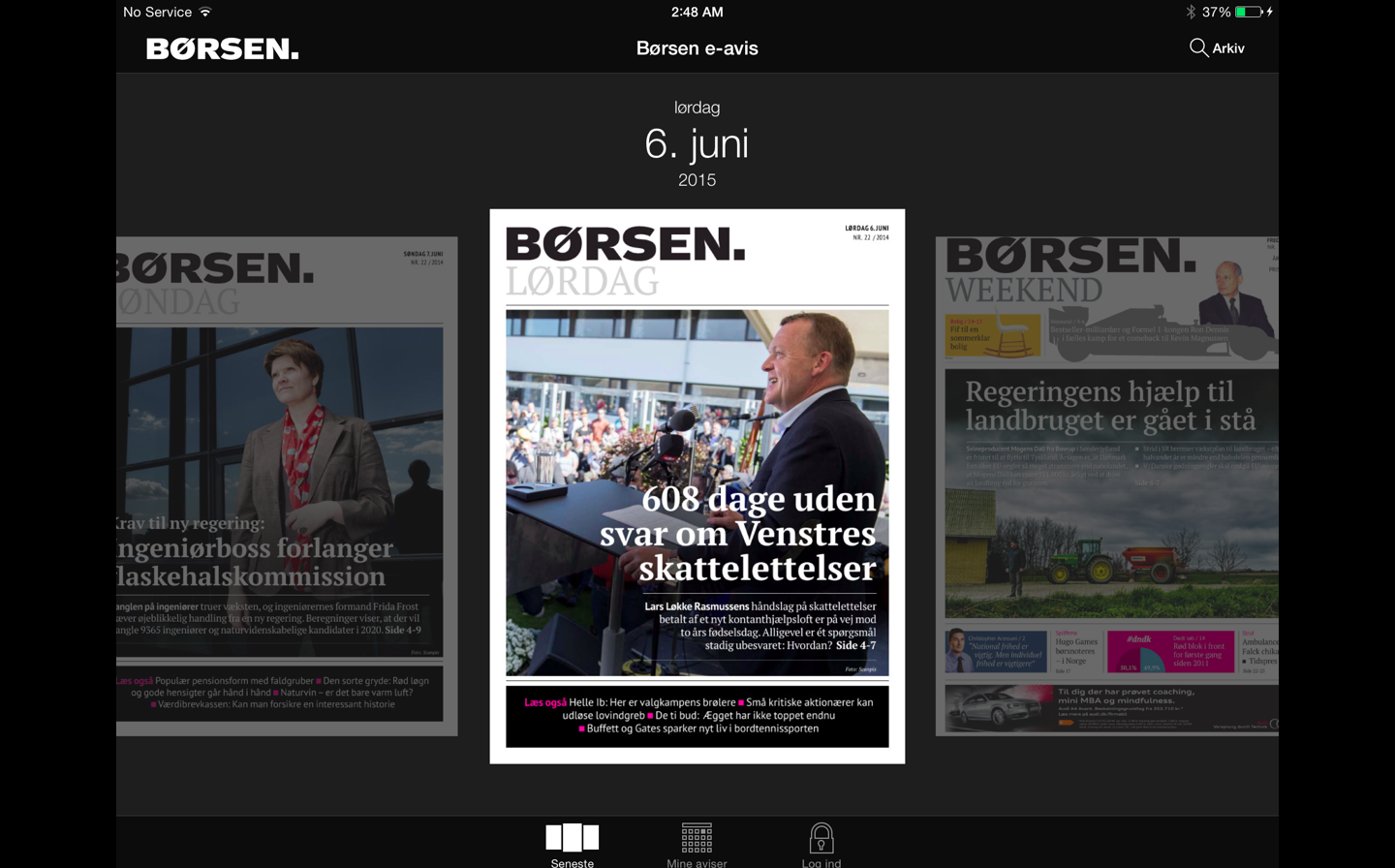
Nordjyske, Denmark
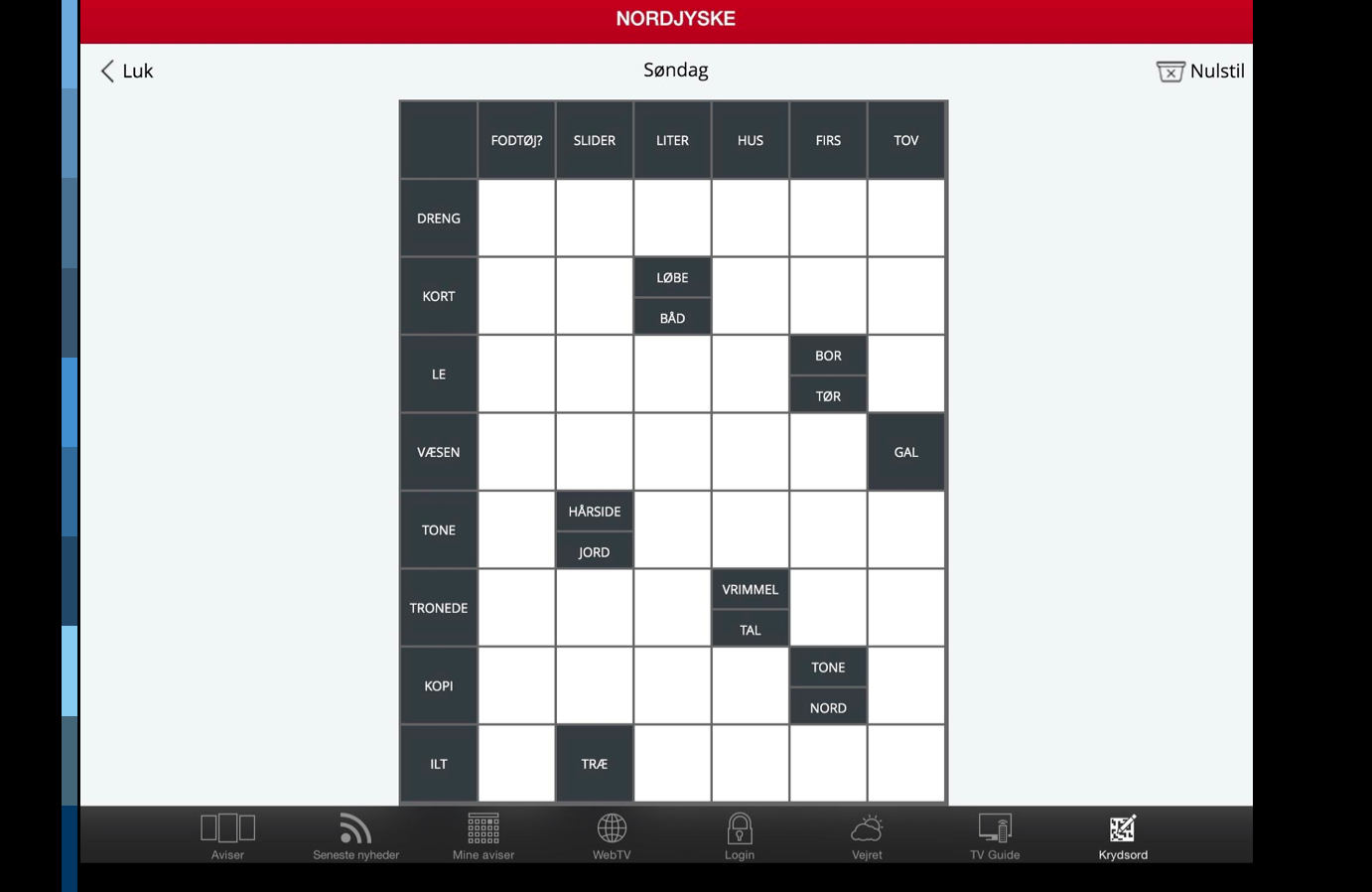
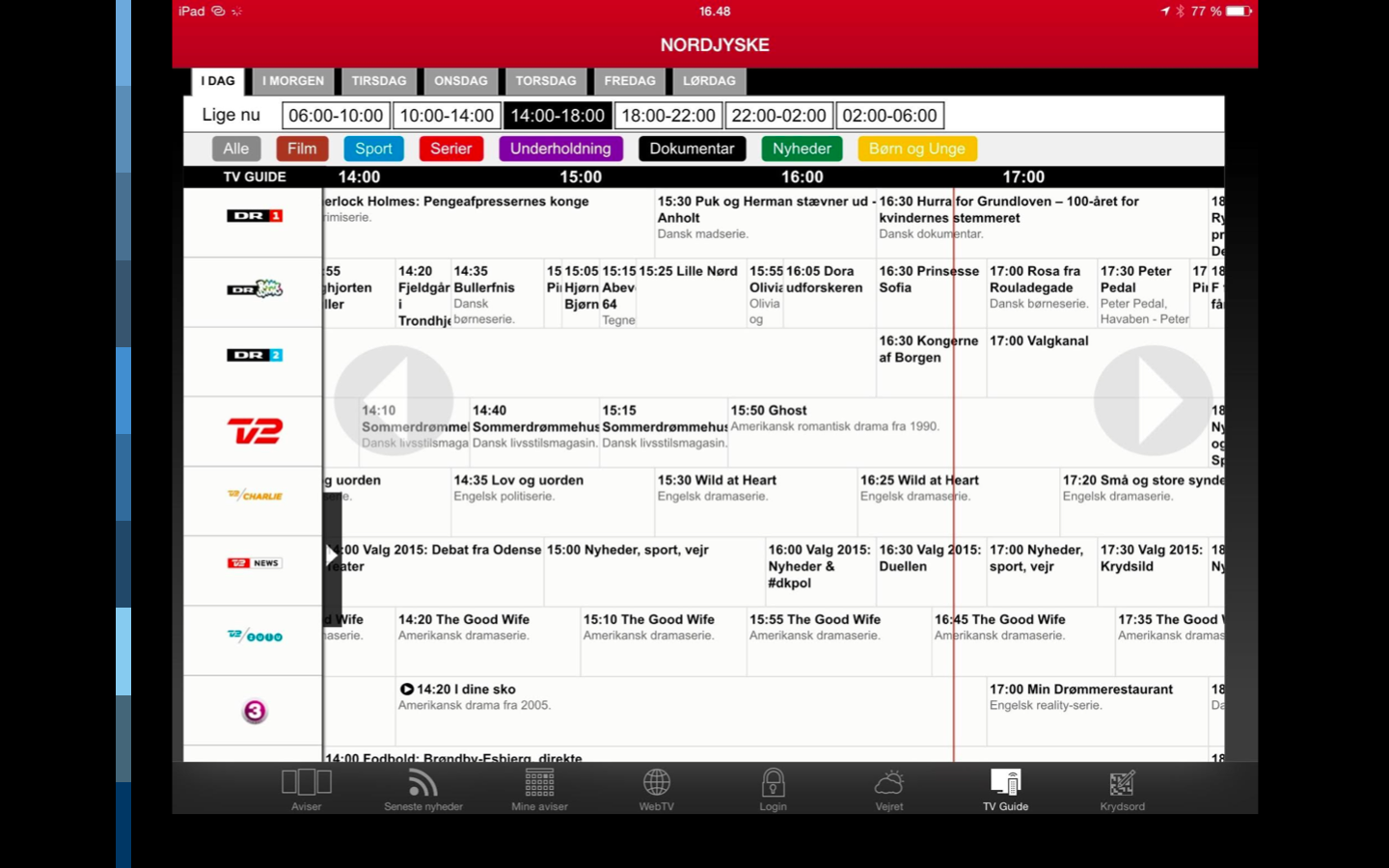
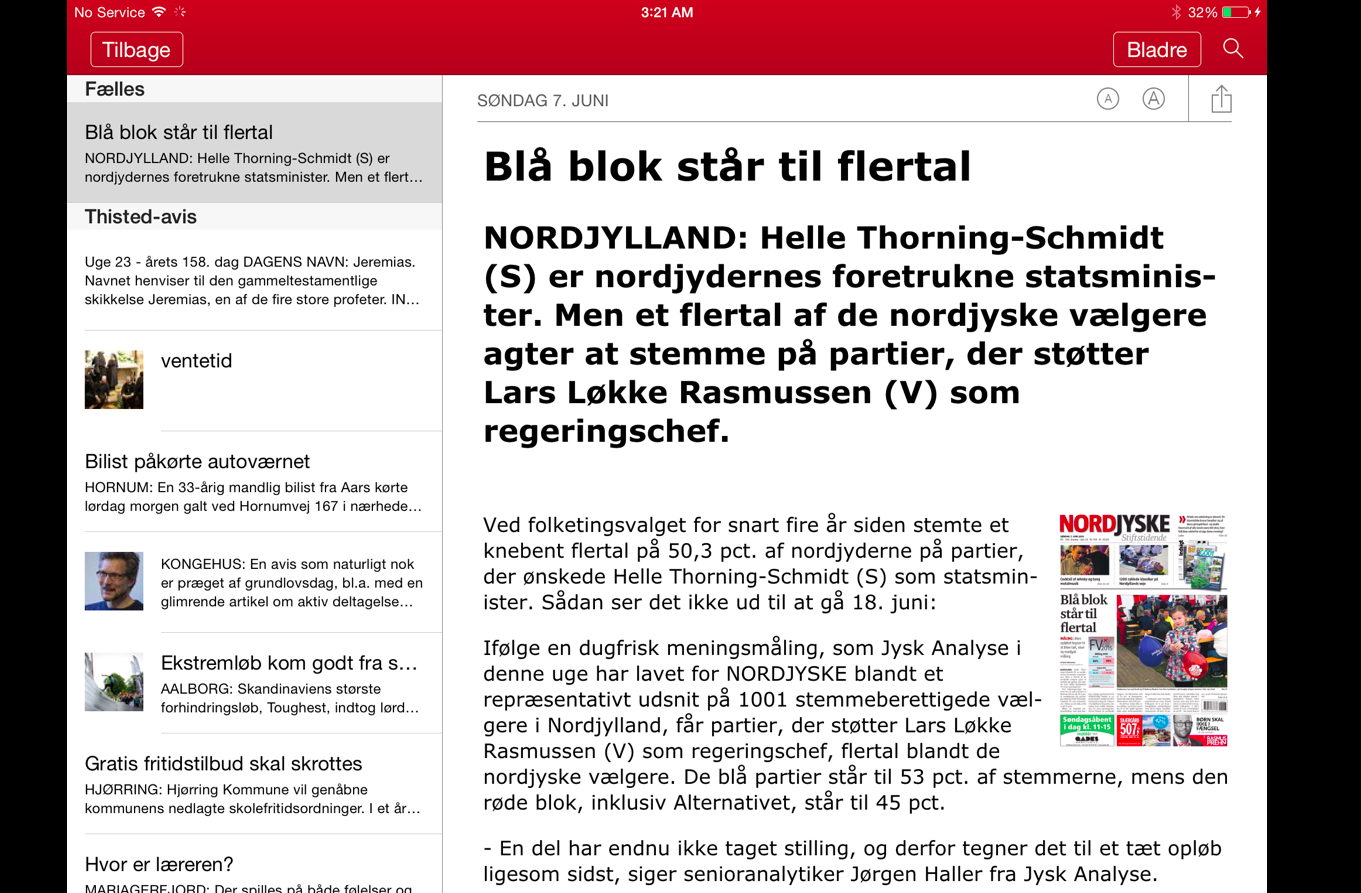
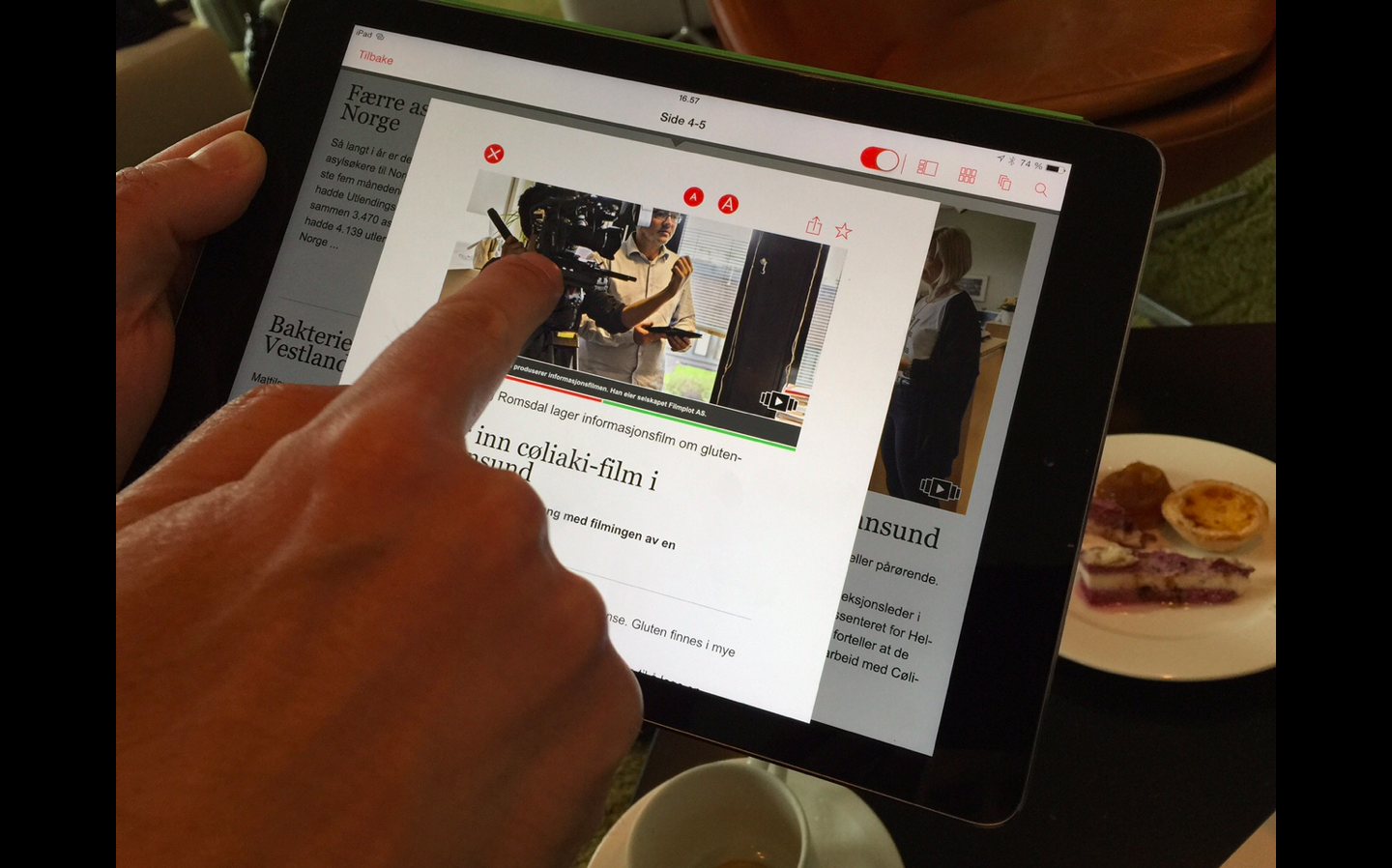
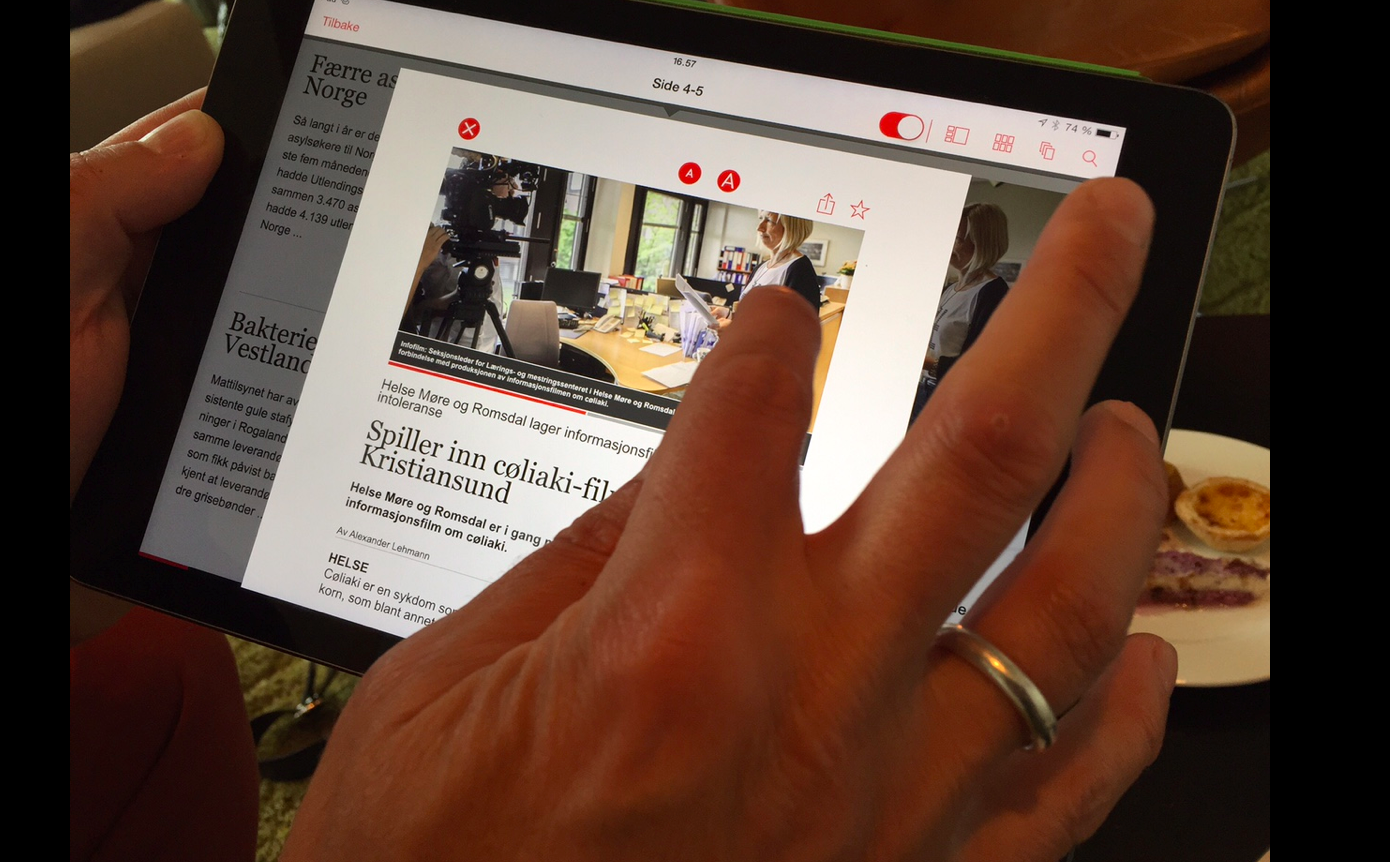
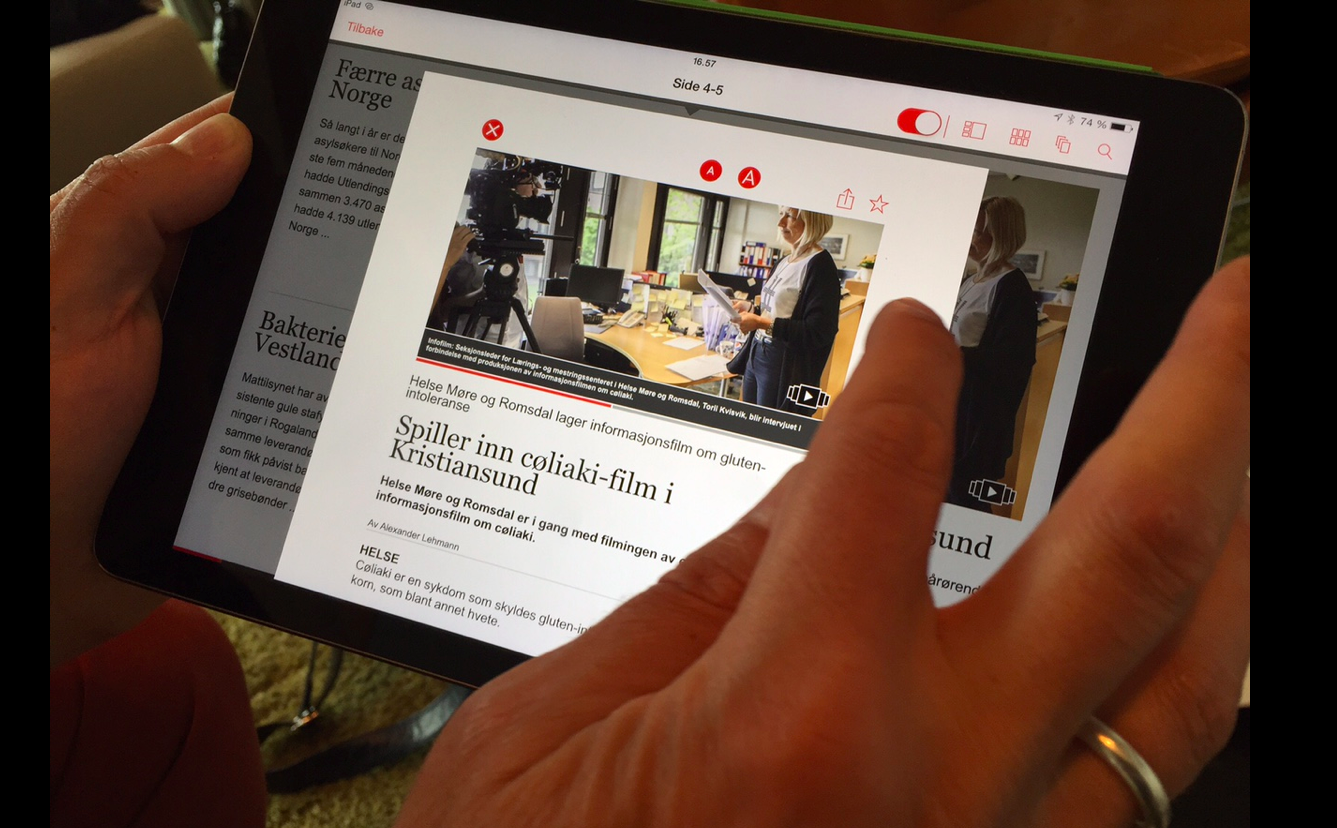
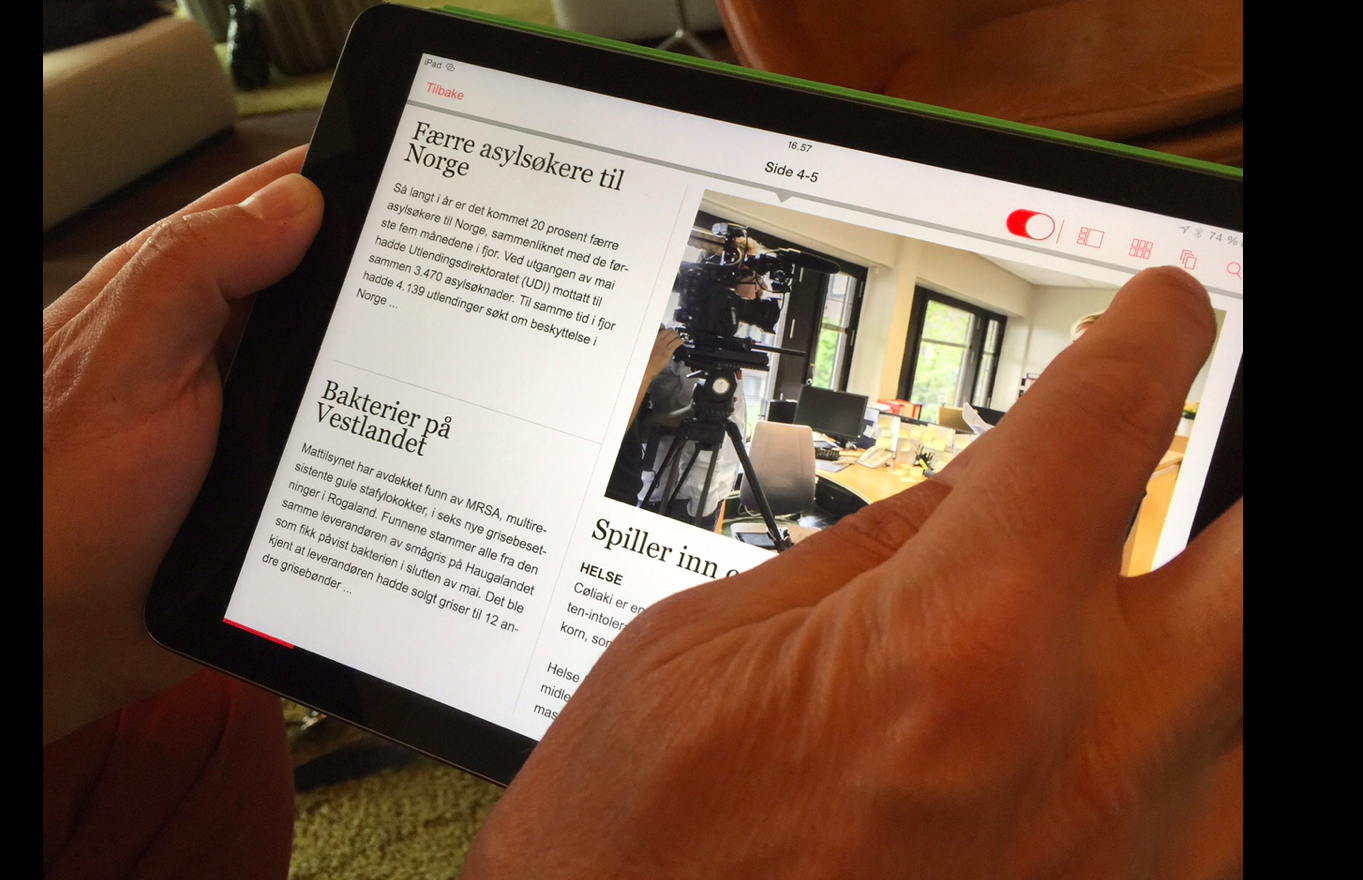
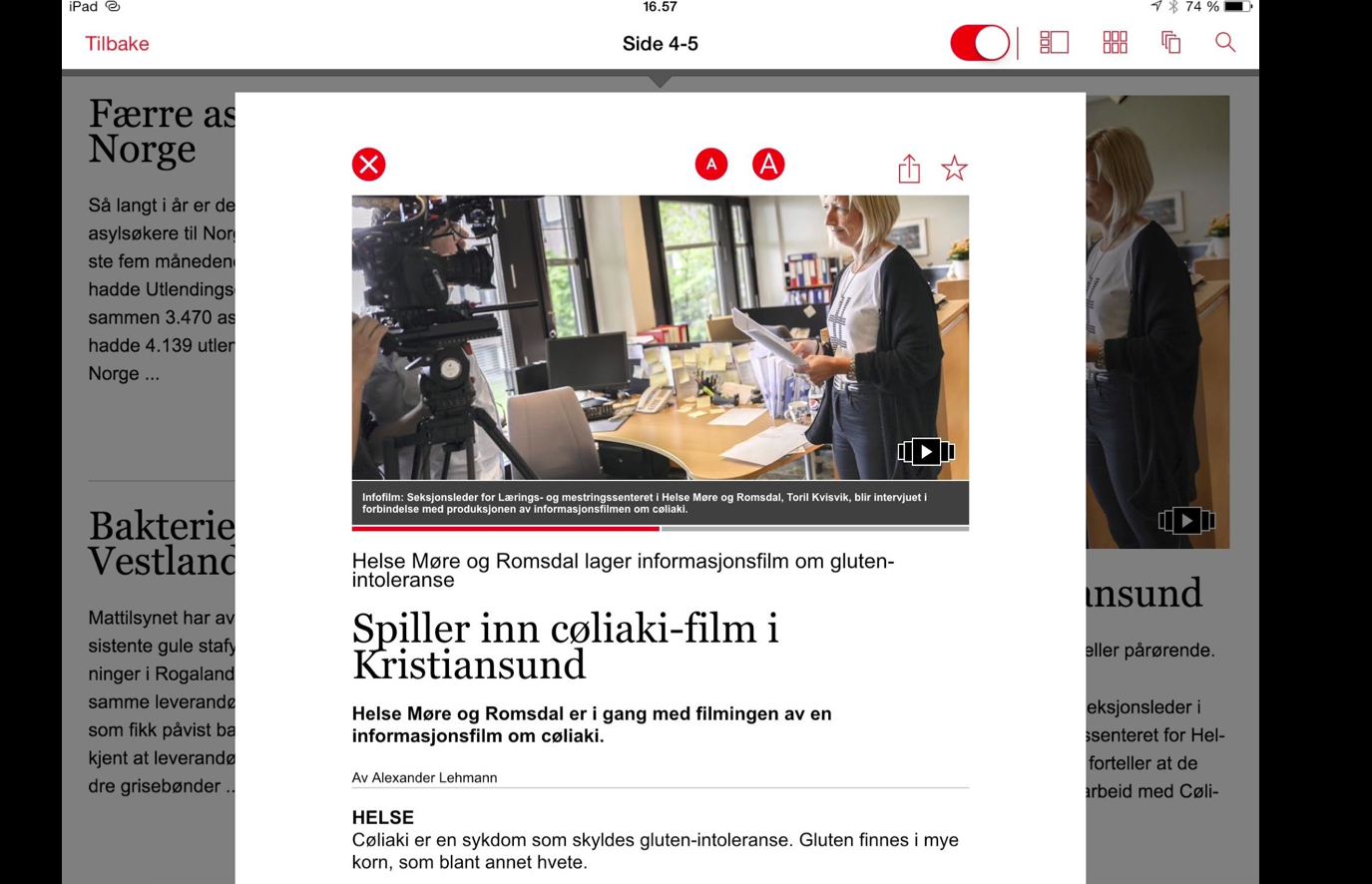
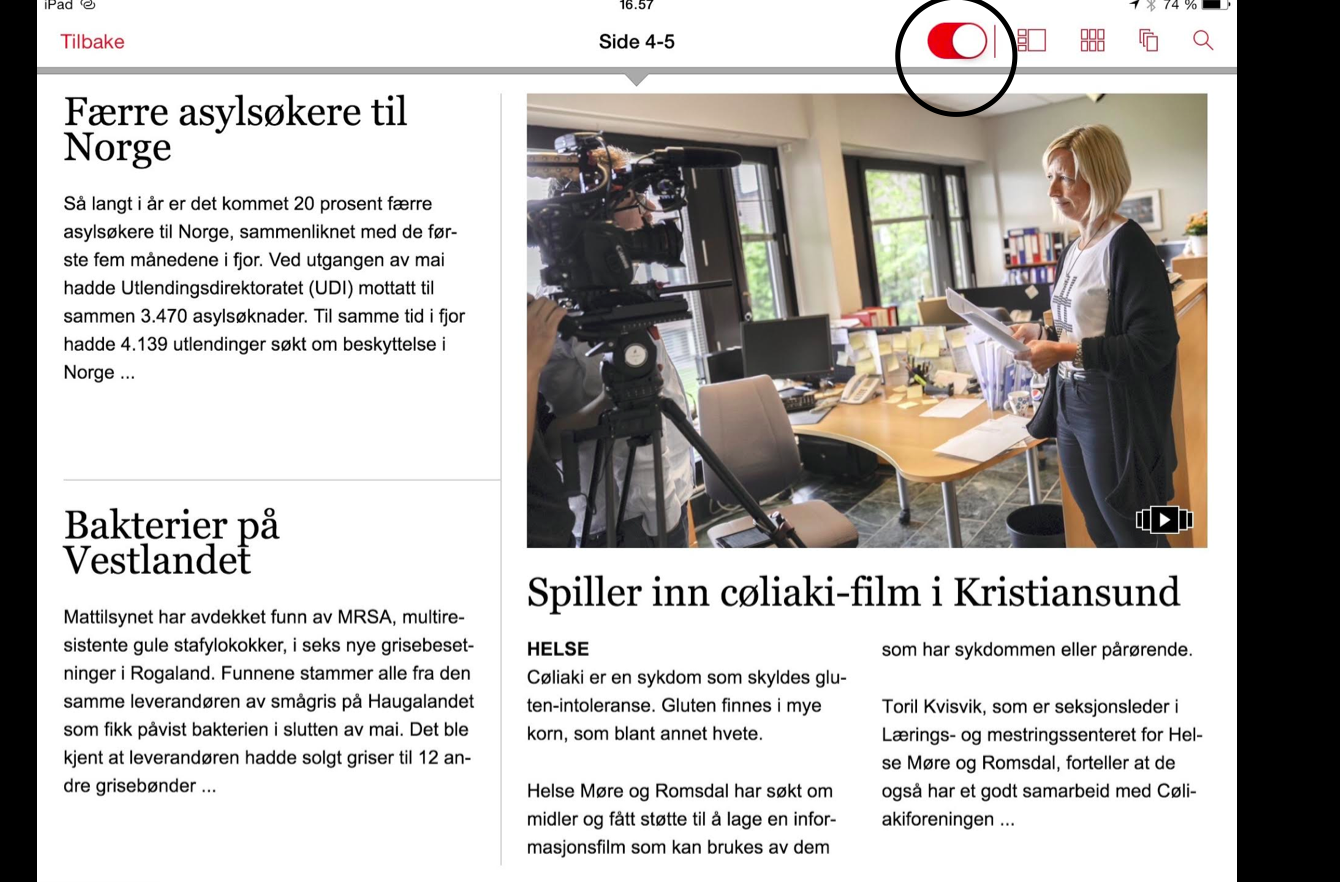
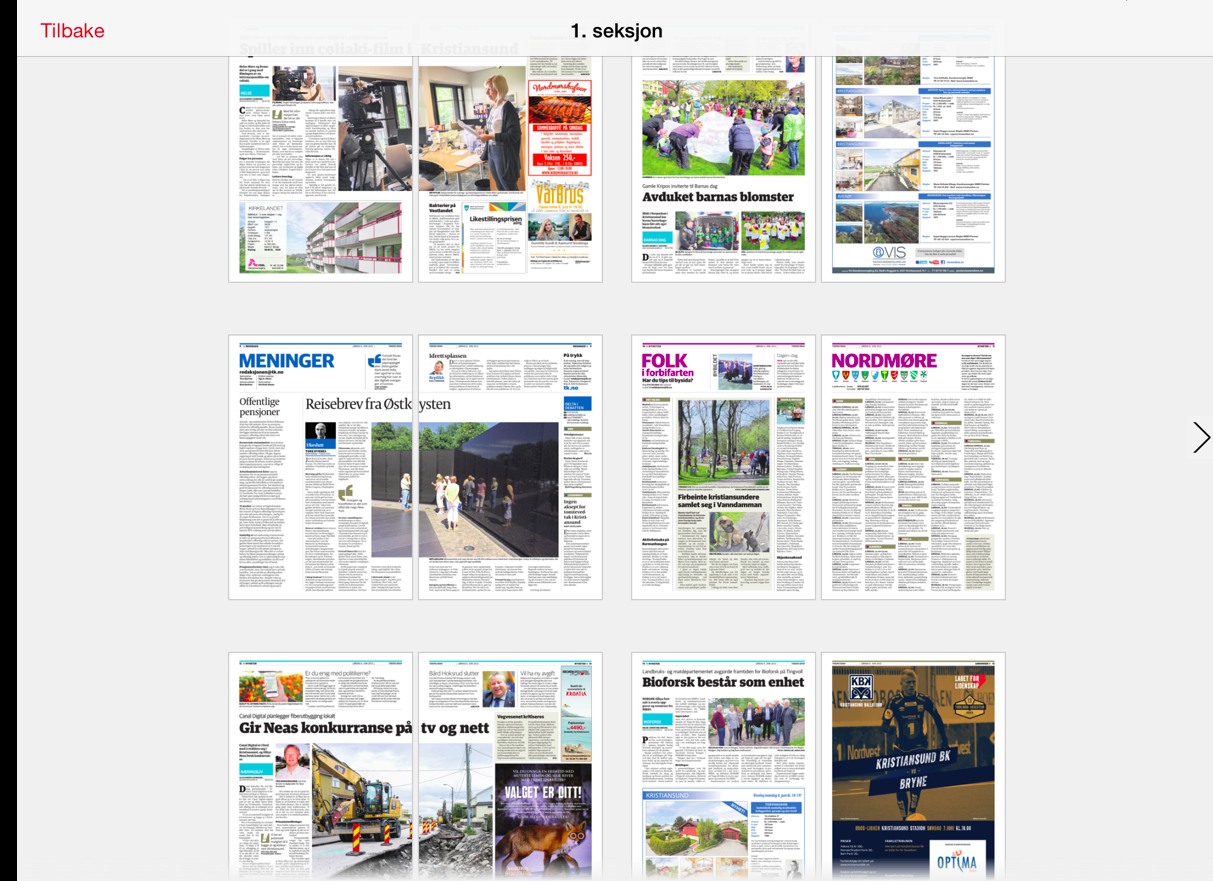
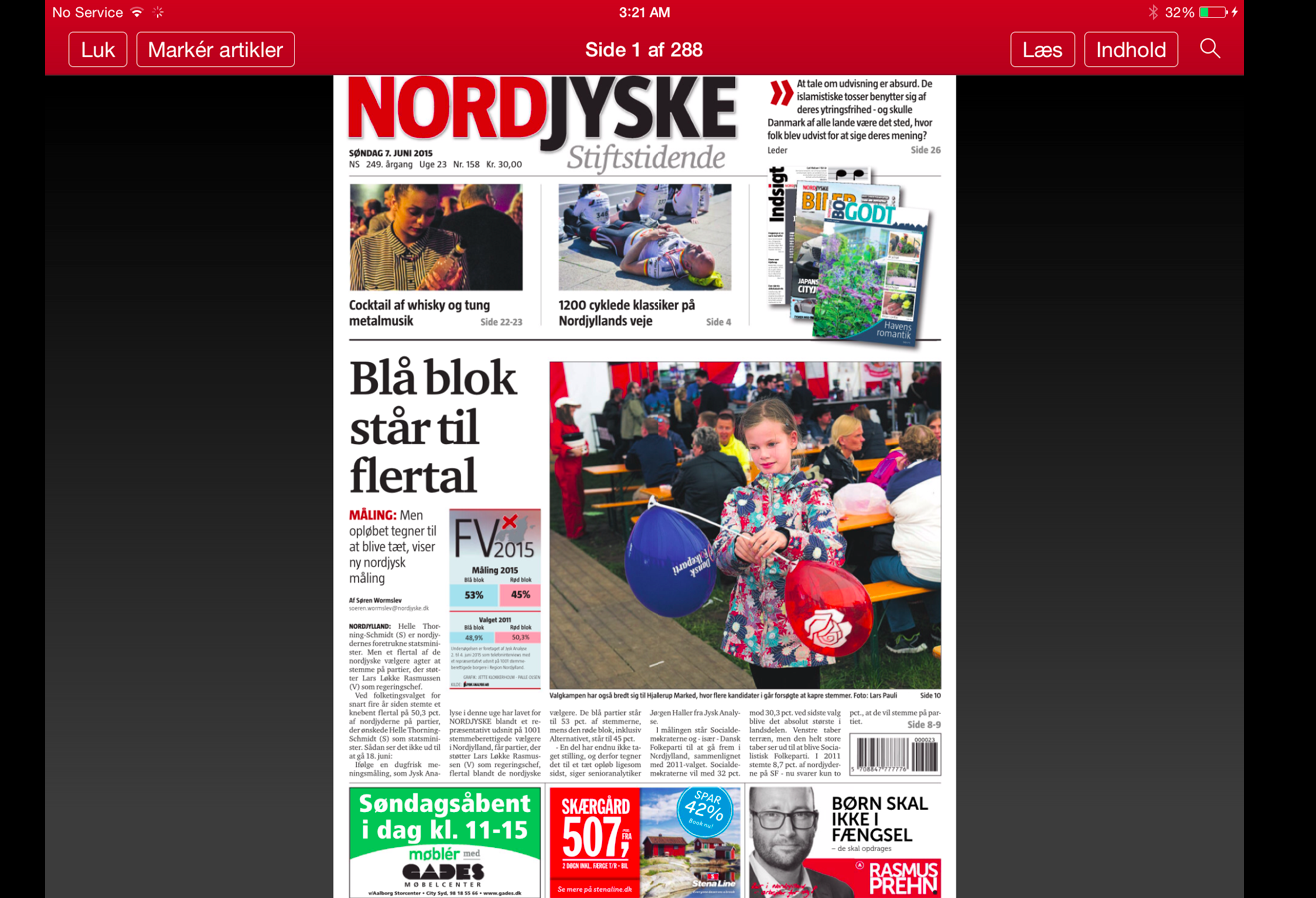
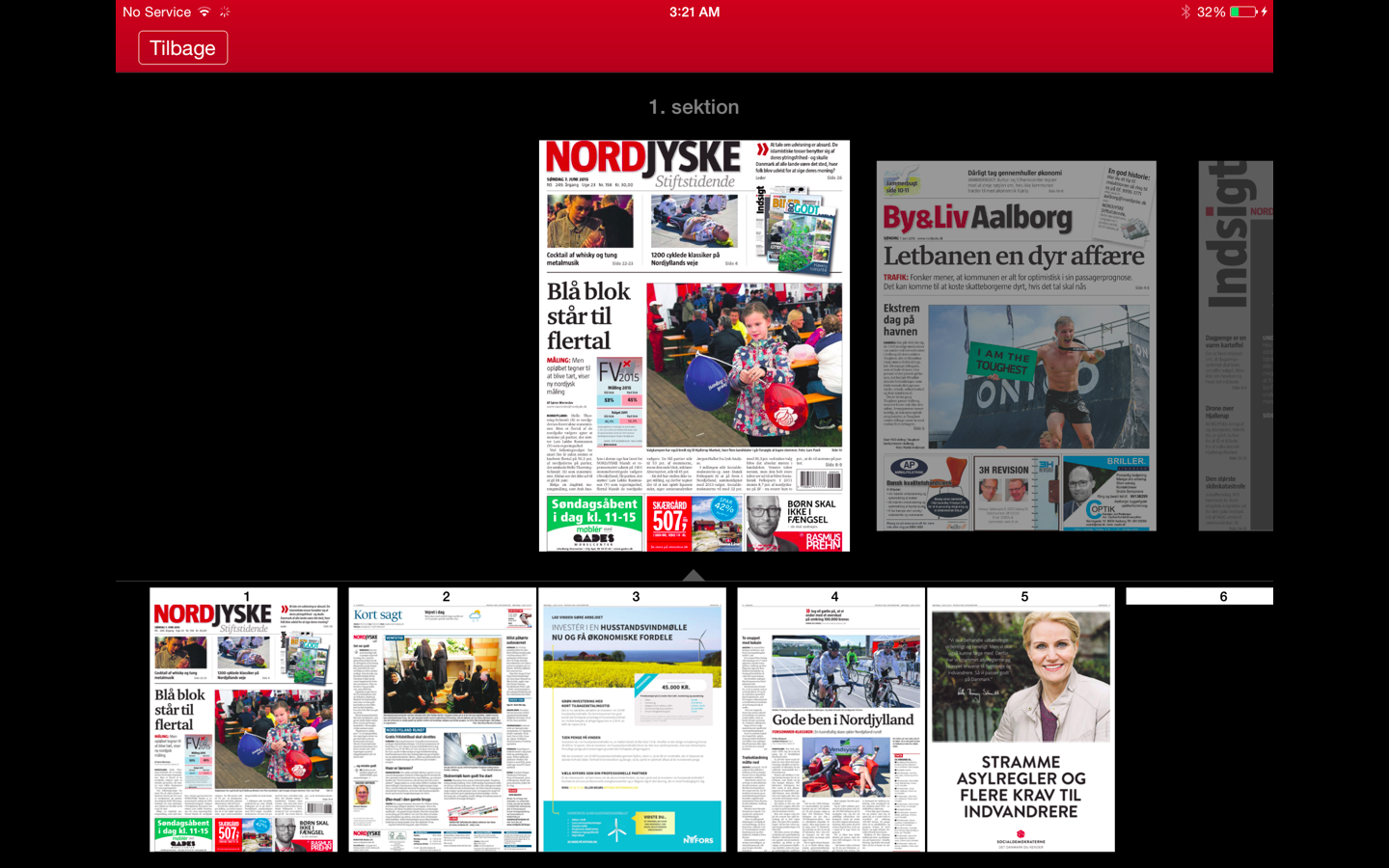
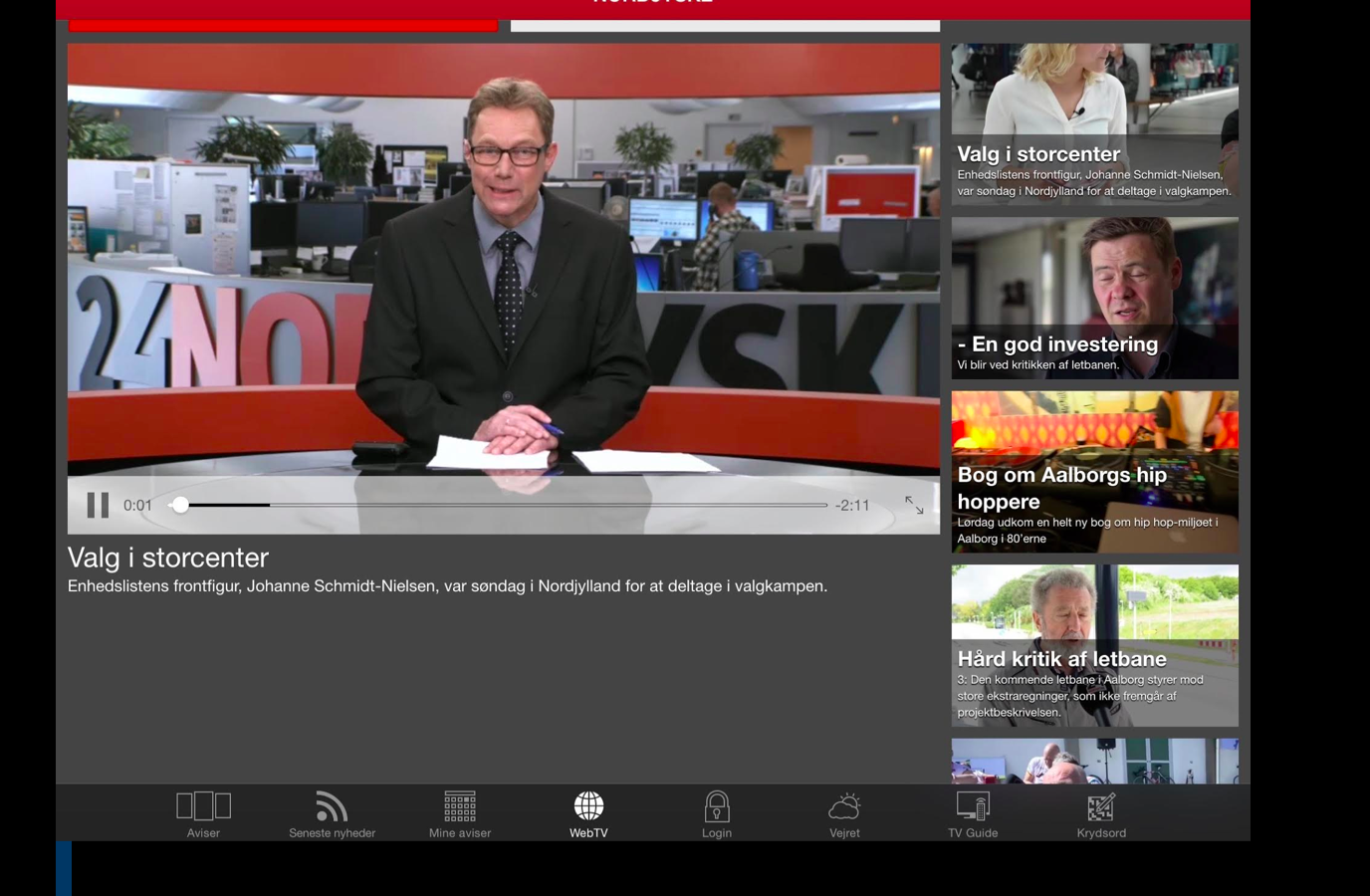
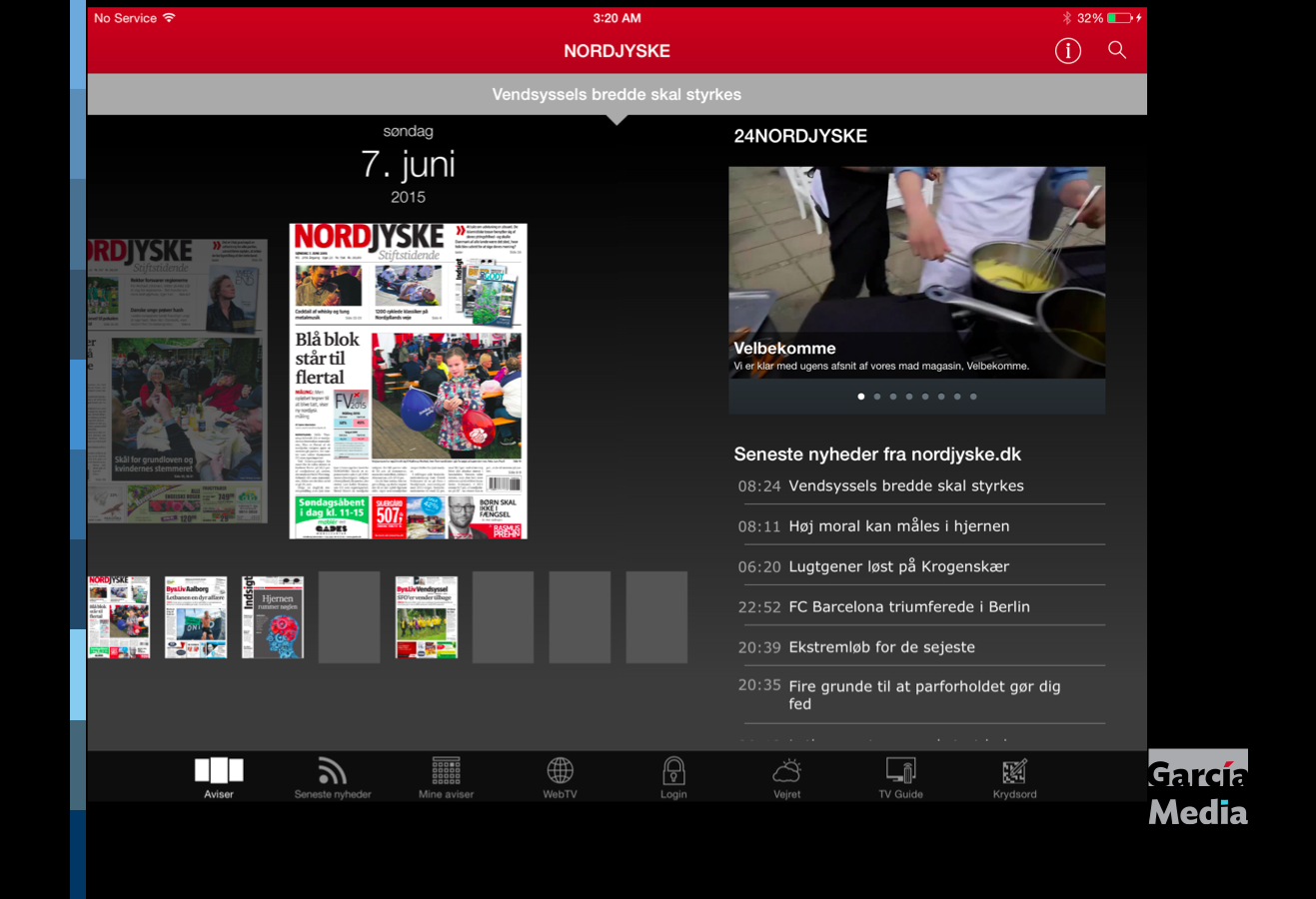
Nordjyske of Denmark is one of the best examples of a e-paper edition: notice that it includes its own web TV, sending users to live news show. It also has a feature (see top button) to go into tablet mode, allowing for better display of photos and a full gallery, even though print edition may have included only one photo. It also produces a special supplement Ekstra.
Aftenposten and the Schibsted Norway experience
Aftenposten (Norway)
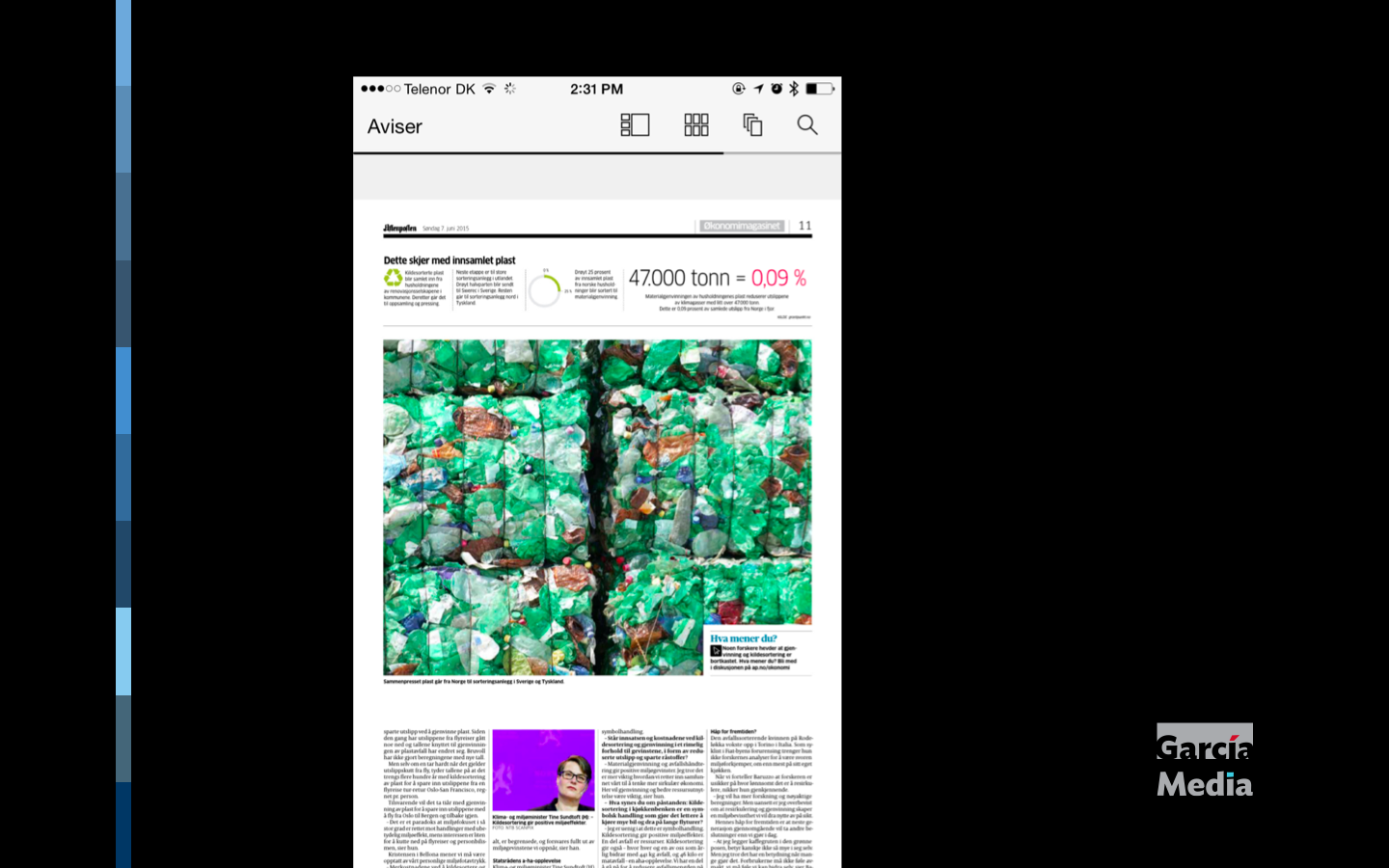
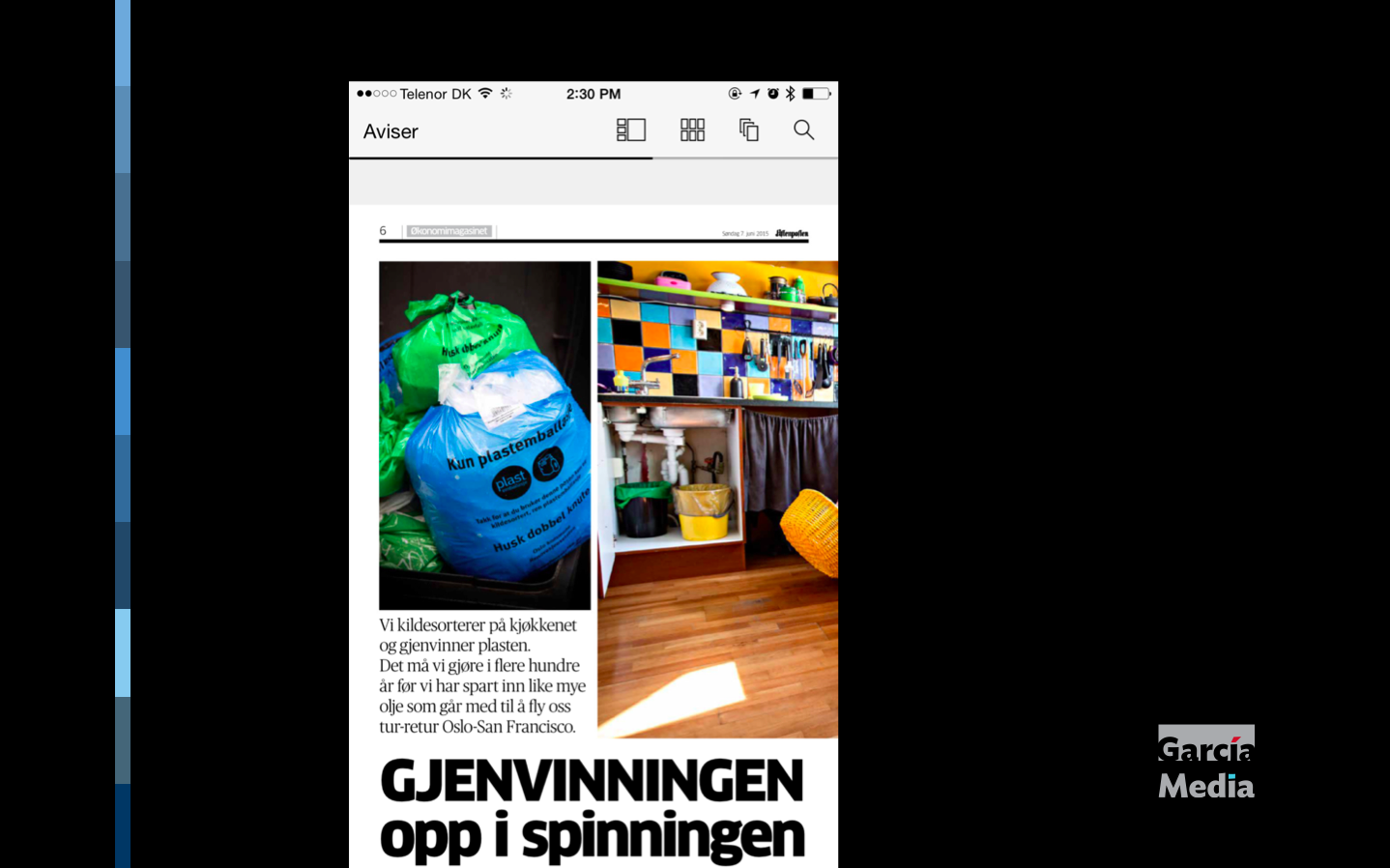
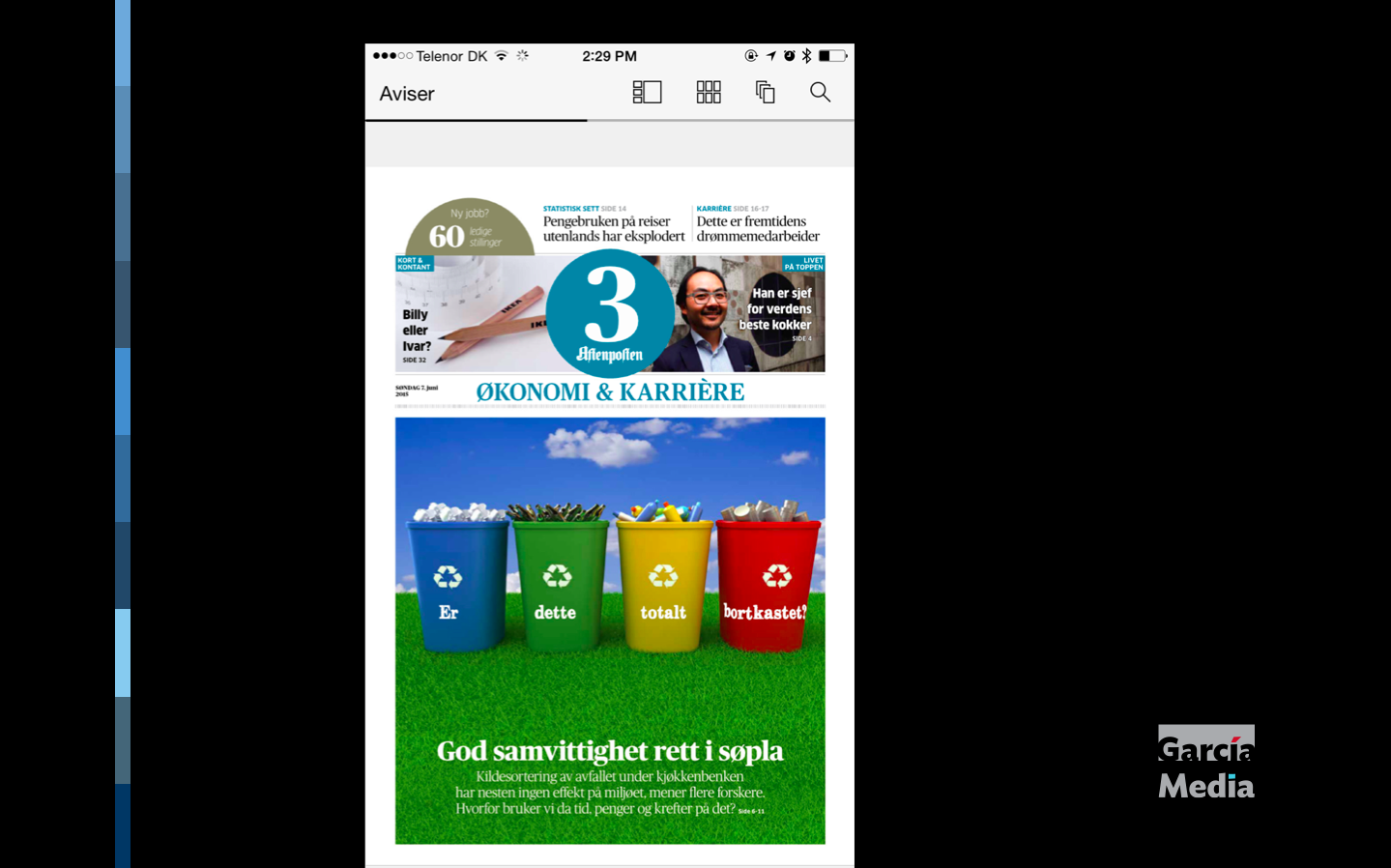
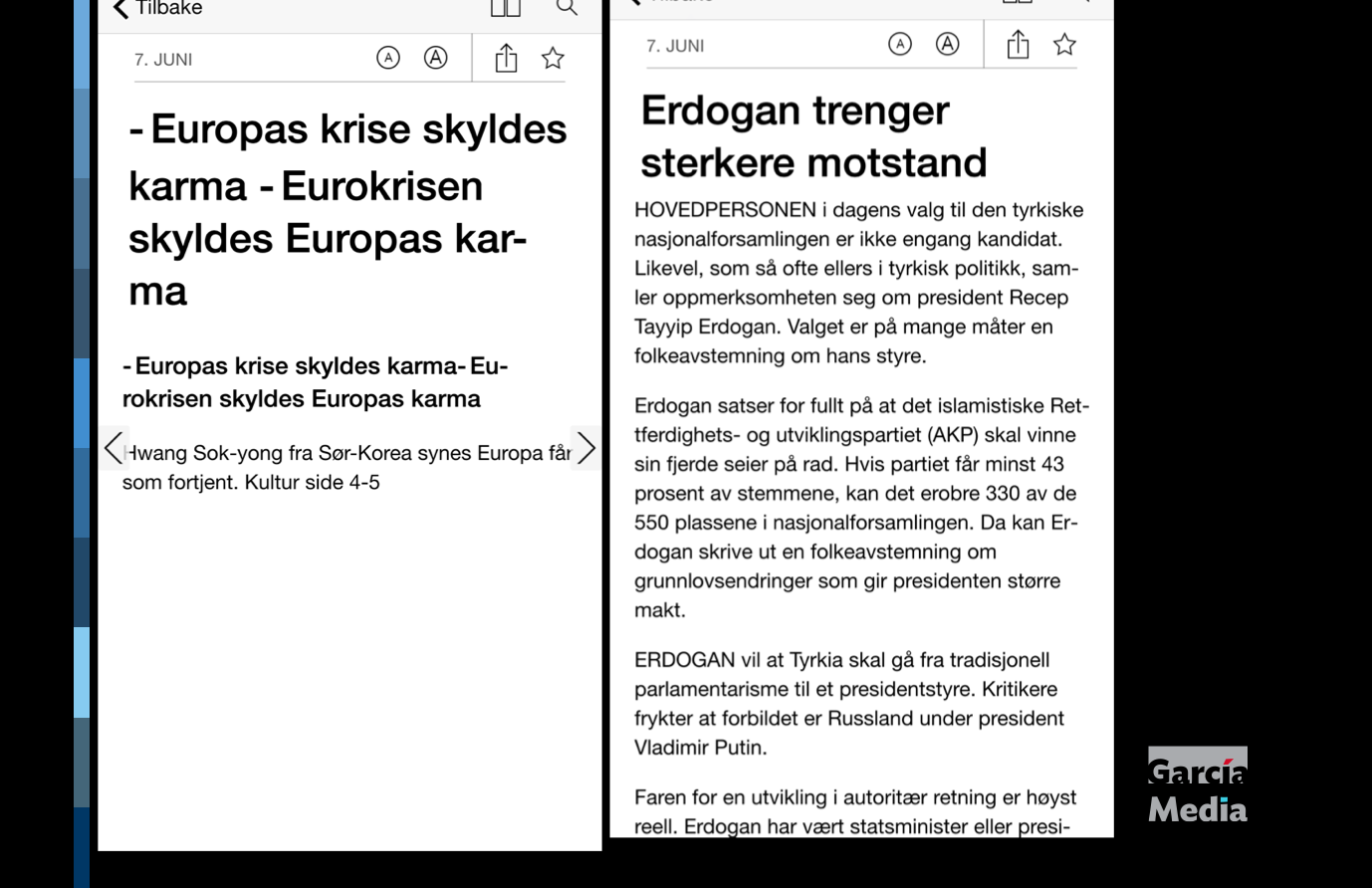
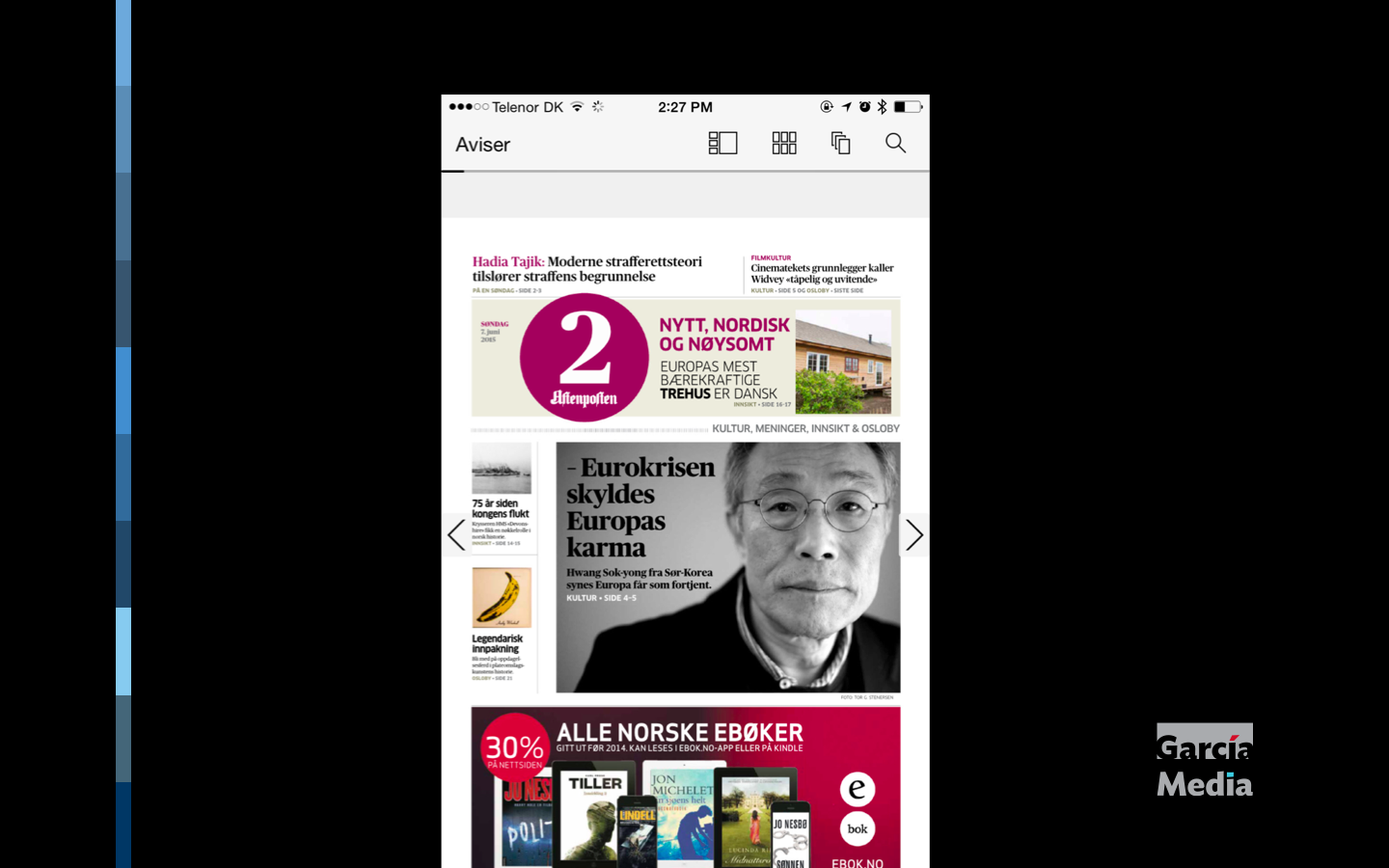
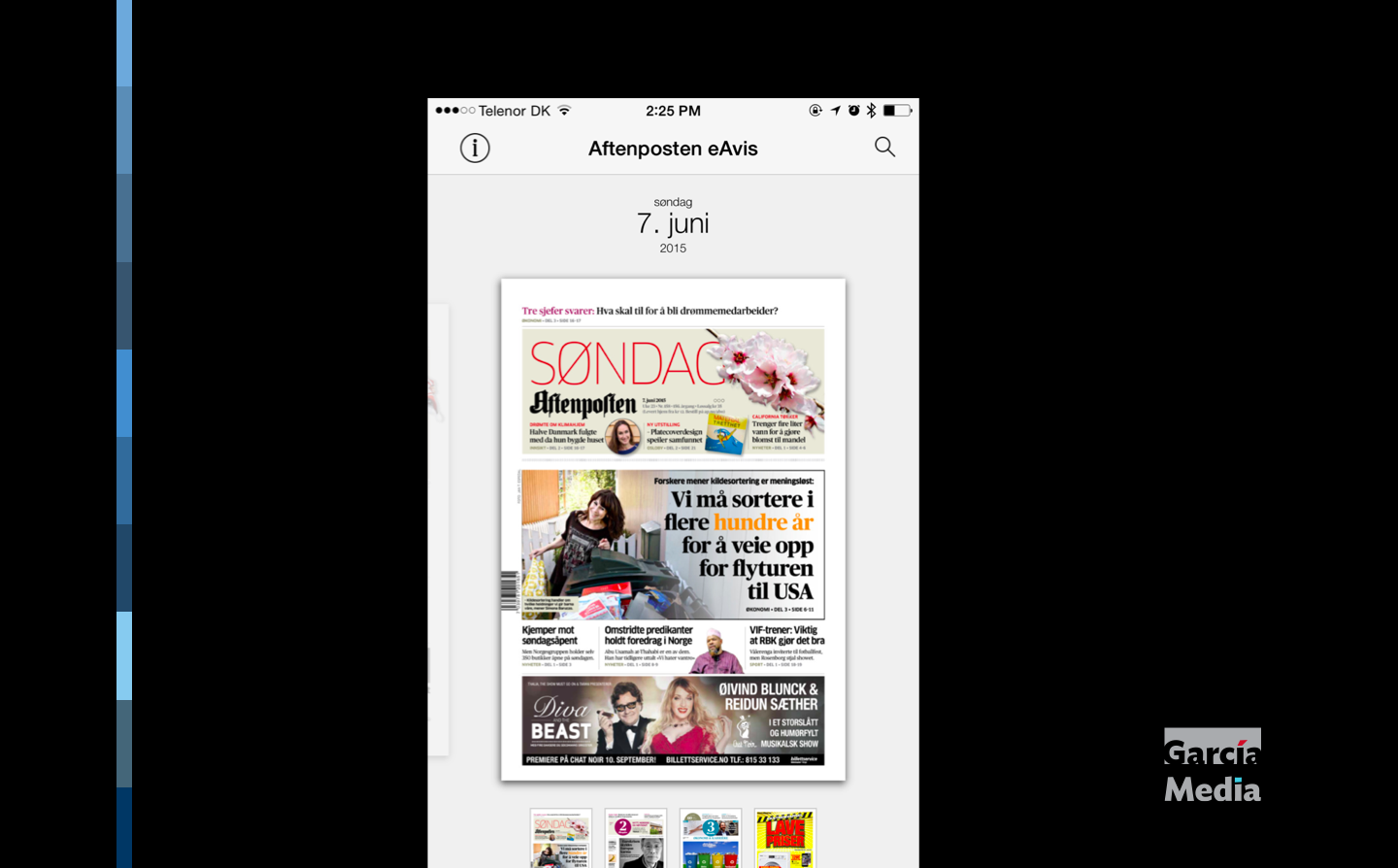
Aftenposten’s e-paper edition as read on an iPhone screen.
Business Models
One of the most discussed themes during the Visiolink Insights Day 2015 program was how to charge readers a fee for the e-paper.
Several of the participants admitted that their e-paper is free, while others mentioned that the e paper is part of a “bundle” for subscribers.
Advertising continues to be a way to support e-papers, with at least one of the speakers saying that a his newspaper, the ads that appear in print (especially circulars) are marked up 5% from their print rate for inclusion in the e-paper.
The view from the business expert
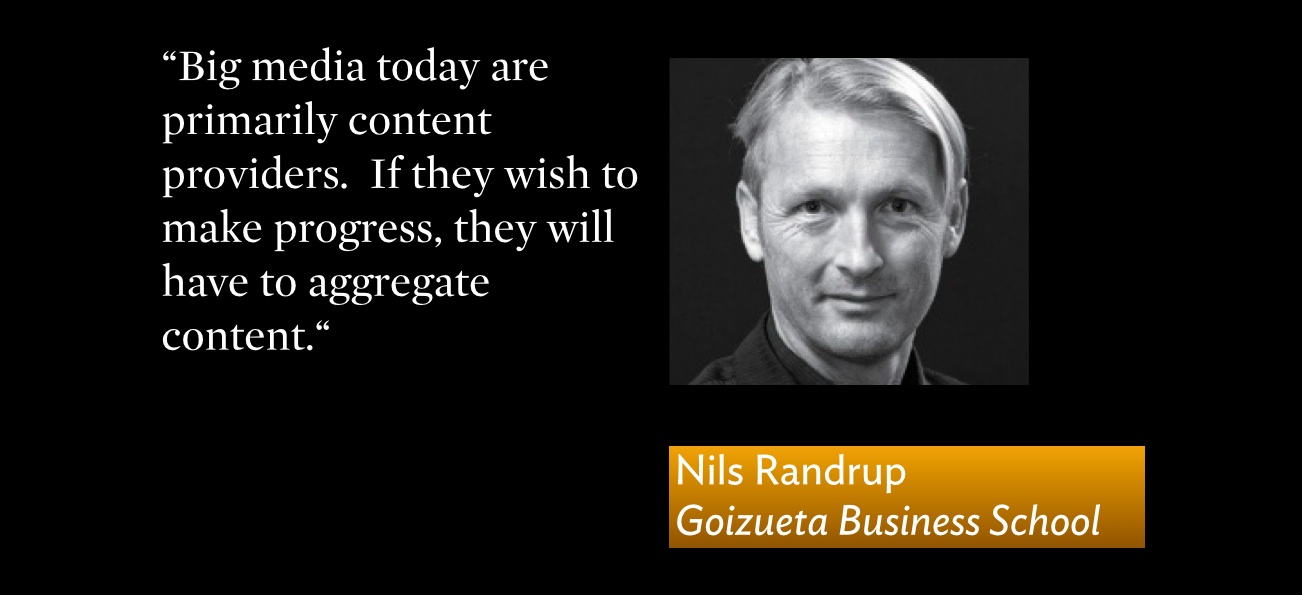
A highlight of the conference was a keynote by Nils Randrup, a consultant and adjunct professor at the Goizueta Business School in California.
Randrup showed case studies of various companies that have succeeded by becoming aggregators. He mentioned, among others, Uber, Cinepolis and iHeart Radio, all of which deal with the customer to customer approach to doing business, facilitating interaction between those seeking a service and those providing it.
“Couldn’t the media business take a page from these companies? They need to decide whether they wish to be aggregators or content providers,” Randrup said.
He also mentioned the rise of premium services and offerings, and wondered if perhaps there is room for a superbly packaged and designed Sunday printed newspaper. “Is there an audience willing to pay as much as $20 for such a product?,” he asked.
Another question from Randrup to provoke the audience:
“Could newspapers consider publishing both an edition with ads and one without, such as what Spotify and Pandora offer?”
Finally, Randrup made it clear:
“Big media today are primarily content providers. If they wish to make progress, they will have to aggregate content.”
He sees digital offerings, and the e-paper in particular, as good possibilities for this to happen.
Meanwhile, in the US…….
For some reason, I don't see the level of sophistication for e-papers in the US that we see in Europe.
In fact, I don't recall a single project in which I have been involved in the US where I was asked to collaborate with anything having to do with an e paper edition.
I think it is time that American newspapers do more with their e paper editions, as I know that sone day it will be the e paper that will be the closest thing to a print edition, especially when printed editions cease to exist Monday through Friday.
If any of you readers know of a good e paper published by a US newspaper, please let me know.